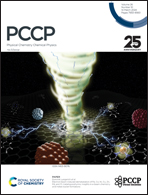Abstract
Delafossites, typically denoted by the formula ABO2, are a class of layered materials that exhibit a wide range of electronic and optical properties. Recently, the idea of modifying these delafossites into ordered kagome or honeycomb phases via strategic doping has emerged as a potential way to tailor these properties. In this study, we use high-throughput density functional theory calculations to explore many possible candidate kagome and honeycomb phases by considering dopants selected from the parent compounds of known ternary delafossite oxides from the inorganic crystal structure database. Our results indicate that while A-site in existing delafossites can host a limited range of elemental specifies, and display a low propensity for mixing or ordering, the oxide sub-units in the BO2 much more readily admit guest species. Our study identifies four candidate B-site kagome and fifteen candidate B-site honeycombs with a formation energy more than 50 meV f.u.−1 below other competing phases. The ability to predict and control the formation of these unique structures offers exciting opportunities in materials design, where innovative properties can be engineered through the selection of specific dopants. A number of these constitute novel correlated metals, which may be of interest for subsequent efforts in synthesis. These novel correlated metals may have significant implications for quantum computing, spintronics, and high-temperature superconductivity, thus inspiring future experimental synthesis and characterization of these proposed materials.



 Please wait while we load your content...
Please wait while we load your content...
